Under the Sea
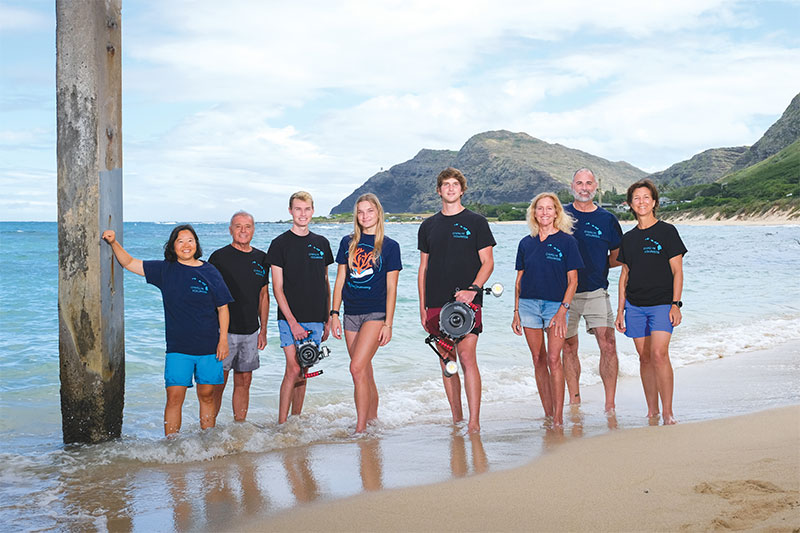
(From left) Frances Tong, Michael Solomon, Conner Humann, Anela Kerber, Damien Beri, Heidi Hirsh, Adam Dolak and Liz Tarquin are part of the team behind nonprofit The Coral Conservancy.
Damien Beri’s deep dive into the world of marine conservation led him to form The Coral Conservancy, a nonprofit dedicated to saving as many coral reefs as possible.
The year 2052 sounds like a made-up, futuristic date. After all, it’s only a decade off from when The Jetsons took place — and they had flying cars. The reality is, it’s only a mere 30 years from today and, according to scientific experts, that’s when coral reefs could become nearly extinct.
There are more than 400,000 acres of reef in the main Hawaiian Islands, home to thousands of species of marine plants and animals. Miles and miles from this aquatic wonderland, Damien Beri, who was born and bred in the Big Apple, would look at it through a screen. He credits the late Ruth Gates, a leader in local reef exploration, for sparking his zeal for the lives that live under the sea.
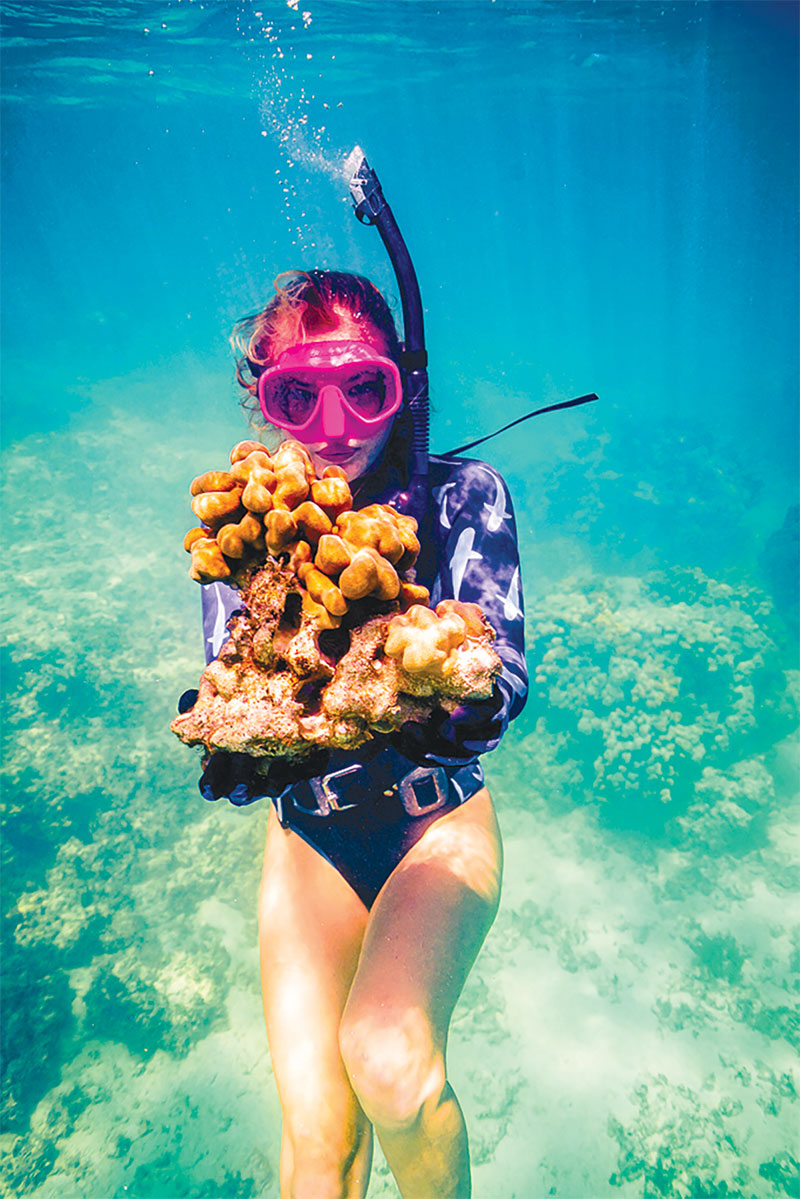
Seventeen-yearold intern Anela Kerber trains to handle, transport and inspect coral for viability. PHOTO COURTESY CONNER HUMANN
“A lot of my initial inspiration came from watching online videos, watching Ruth Gates talking about corals, and how she was a doer and she got things done for the reefs,” he says. “Being born and raised in New York City, I consider myself a doer.”
Beri earned a master’s degree in marine conservation and policy from Stony Brook University and not long after found himself on a 10-hour flight from one side of the country to the other to intern for the National Oceanic and Atmospheric Administration’s Protected Resources Division. Yearning to do more, Beri sought coral restoration organizations to get involved with but came up short.
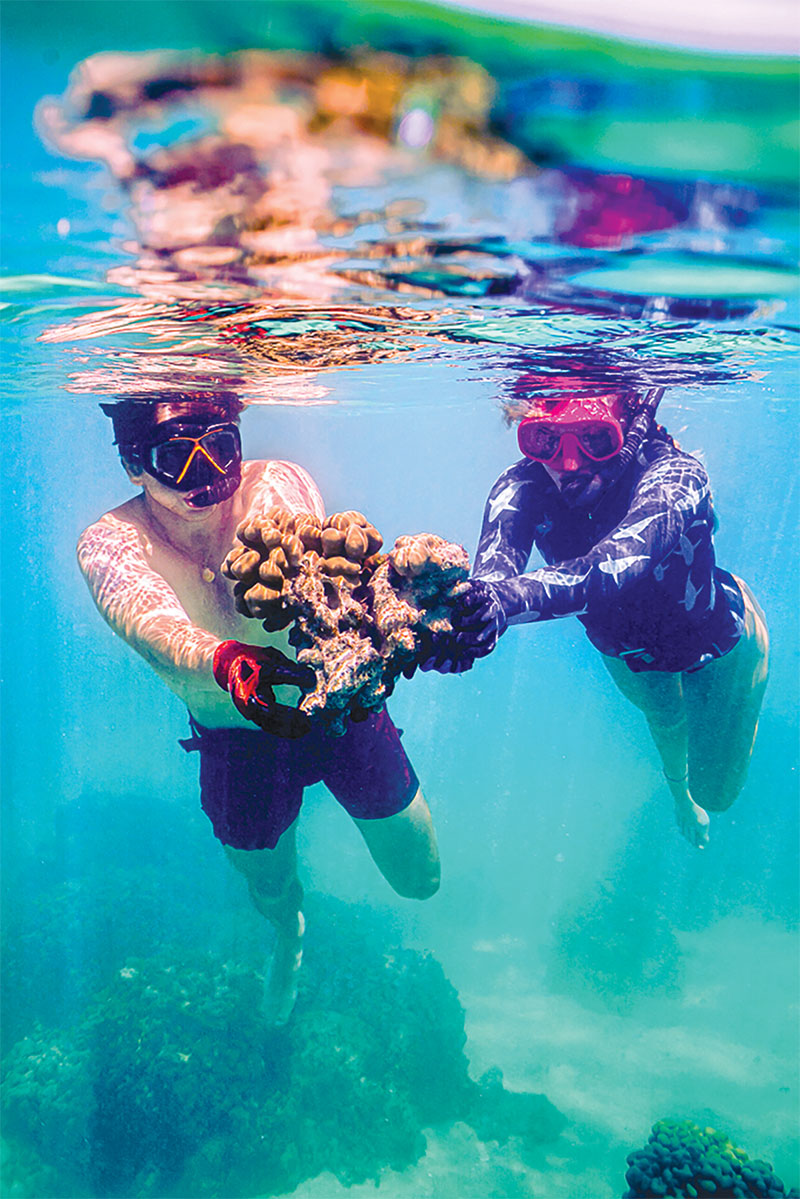
The Coral Conservancy president Damien Beri shows intern Anela Kerber, a Punahou School student, how to transport coral and safely ensure it’s protected during training. PHOTO COURTESY CONNER HUMANN
“Throughout that time (with NOAA), I went with my mentor to all of the different coral restoration nurseries and met with many of the leaders in coral restoration here on the island,” he recalls. “Even through doing that, I struggled to find a way to put my skills in coral restoration to use. There was no opportunity for me to get involved in coral restoration in Hawai‘i, which I was shocked by because Hawai‘i has lost about 50% of its coral reefs. Why wouldn’t there be more avenues for people like myself and all the other community members in Hawai‘i to participate in coral restoration?”
Becoming the answer to his own question, Beri established The Coral Conservancy, a nonprofit organization that seeks to upscale restoration efforts through community outreach.
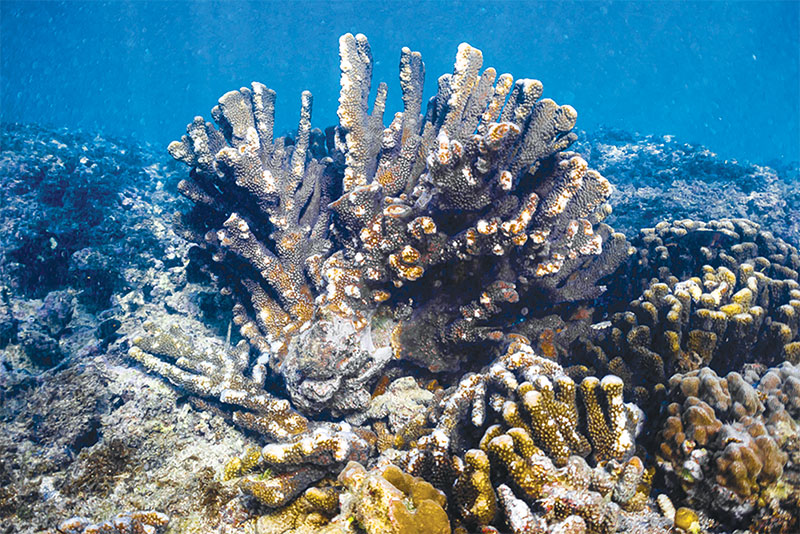
A trained volunteer discovered a piece of coral at Ala Moana Beach Park that needs the nonprofit’s help. PHOTO COURTESY DAMIEN BERI
“I took it upon myself to bring together a team of world-renowned scientists and experts in coral restoration, policy and nonprofit organizations, and I reached out to several politicians on the island to craft a permit … which would allow the people of Hawai‘i to get hands-on with coral restoration and make a difference. Not just an activity to do, but something that will make a real difference on our island for its community members,” he says.
As president, Beri works alongside board members Heidi Hirsh, Liz Tarquin and Coppy Hulzman, as well as countless advisers that include Fiji-based coral restoration pioneer Austin Bowden-Kerby; Phil Dustan, who was a part of the award-winning documentary Chasing Coral; Ken Nedimyer, founder of Coral Restoration Foundation; and Ellen Pikitch, executive director of the Institute of Ocean Conservation at Beri’s alma mater, Stony Brook University.
Together, the team orchestrates field training and educational lectures for community members who are willing and able to plunge headfirst into the underwater world of all things coral.
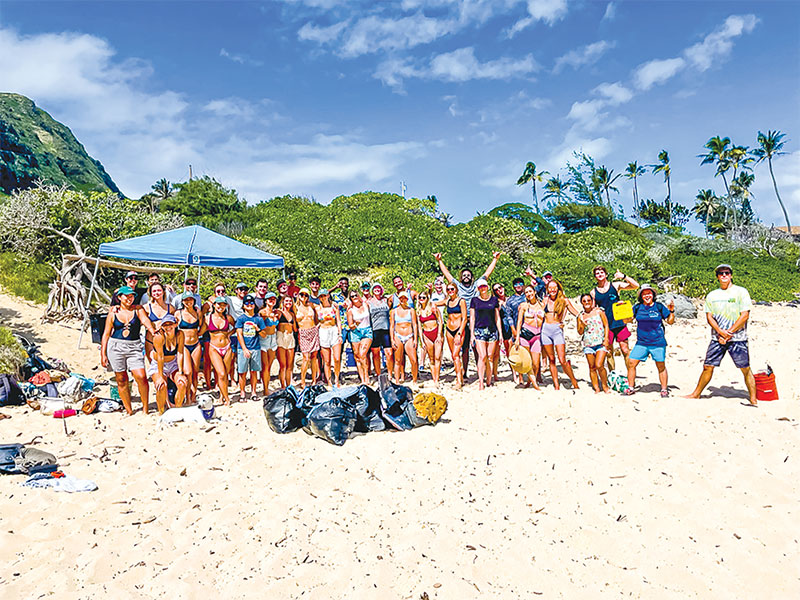
As a way to get younger generations involved with conservation activities, The Coral Conservancy holds community events, including a recent beach cleanup at Makapu‘u Beach Park with Community 808 and Banán Hawai‘i.
PHOTO COURTESY BANÁN HAWAI‘I
“We want to be fully community-based, like we want the community to lead our organization,” says Beri. “For structural purposes, we have people on paper, but it’s really the volunteers that make our organization what it is.”
Those interested can sign up for the nonprofit’s training exercises (follow @the.coral.conservancy for updates), which are held at Kaimana Beach in Waikīkī for a simulated coral restoration exercise and at Hawai‘i Kai Retirement Community, where they learn the ABCs and 123s of the operation. Volunteers will learn how to clean and prepare corals for transition; the materials and supplies used for coral restoration; what a broken coral looks like and where it should be planted to save it; other important marine species that are necessary to uphold the balance and ecosystem of the reef; and safety skills in the water.
Once they’re ready for the real deal, Beri and his team will take volunteers to the nonprofit’s only permitted site, Makai Research Pier in Waimānalo, where they are legally allowed to take care of one species of coral, porites evermanni.
“We are the first organization ever to work with this species,” Beri says. “We chose this coral because it’s an incredibly resilient, heat tolerant, genetically superior, super coral, and the efforts and what we do with this coral won’t be for nothing because it’s been shown to survive warming, higher, more acidic conditions in the ocean.
“The permitting process was extremely rigorous, and it took a very long time,” he continues. “The reality is that corals die faster than it takes for someone to apply for a permit to save it. It took us a year to get our permit, and corals don’t have that long.”
The Coral Conservancy’s overarching goal is to garner a permit large enough to cover a broad area of coral reefs that need saving, which, frankly, is most of them. Its permit now is restricted to one region and one type of coral, and Beri, while grateful, says it’s not enough.
“Our baseline for acquiring this permit was that we would be responding to the broken and damaged corals that are strewn around our island,” he explains. “We have a very high density on a very small island, and the reefs are right up against the shore, so there’s consistent impact for not only natural sources breaking apart reefs but people, boats and fishing, too.
“There are so many broken corals in our reefs and so many divers and marine community members who are a part of this community willing to help, and, logistically, our plan was to have a permit that would allow us to develop emergency response methods whereas we find, locate and identify broken, damaged and dying corals, and save them right then and there. We don’t bring them to a nursery, we don’t take them to other locations, we find the corals that need the help and we save them, and we train the community members of Hawai‘i to do that.”
Until that’s possible, The Coral Conservancy will continue to do what it can to help preserve one of the most vital ecosystems on the planet.And, sure enough, the proof is already in the pudding. Volunteer Frances Tong, who found out about the organization after reading about it right here in MidWeek O‘ahu’s “Proof Positive” feature (published April 7, 2021), discovered a giant pocillopora eydouxi (or antler coral) — one of the last of its kind in the area — at Ala Moana Beach Park that was nearly destroyed by a boat.
“We’re going to name it the MidWeek coral,” says Beri. “The beautiful thing about that coral is that one of our trained volunteers who went through our program found it. That shows that our training program is actually working. We put our request in to the state, but we still haven’t heard back and it’s been months. This coral is one of the last remaining ones in the area, it’s dying, it was damaged by people and we’re trying to do something to save it.
“We know that we cannot do this alone, and that’s the whole purpose of our organization” he says. “No one organization or person or thing or method is going to save coral reefs. It’s going to take all of us. It is all of our responsibility to do something.”
For Beri, 2052 is well within his lifetime (he’s 28) and even more so in generations after his. This, coupled with his pure intrigue and respect for the sea and its creatures, makes this task his life’s work.
“It’s our young generation that is inheriting the reefs,” he says. “We are inheriting a destroyed ecosystem. It is our — it is my — responsibility at this age to start doing something. If I’m not doing something, I’m doing myself and the planet a disservice.”
For more information on The Coral Conservancy, visit thecoralconservancy.org.


